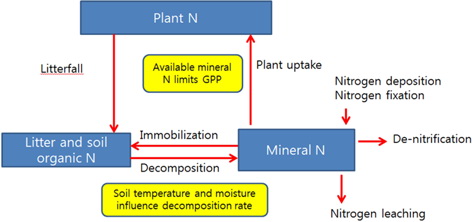The Tibetan plateau plays an important role in energy and carbon cycles by providing an elevated heat source and by storing a large amount of soil carbon due to low temperature. The main vegetation of the plateau is alpine grassland.
This study evaluates performance of Community Land Model 3.5 with carbon and nitrogen cycles (CLM3.5CN) over a alpine grassland in the Tibetan plateau in terms of energy and carbon fluxes in conditions of reasonable phenology and initial carbon pool comparable to observations.
Comparison between model and observation shows following features. The model captures the magnitude of maximum leaf area index (LAI) but underestimats leaf mass. Net ecosystem exchange (NEE) is significantly underestimated during the growing season and soil temperature is also underestimated throughout a year with higher negative bias in winter than in other seasons.
In order to examine the cause of the model deficiencies, researchers design four sensitivity tests: seasonal mulch; shallow rooting depth; reduction of critical soil moisture to limit the decomposition rate; smaller specific leaf area (SLA). Considering seasonal mulch improves the negative bias of soil temperature during dormant season has little effect on the NEE during the growing seasson. Underestimation of NEE during the growing season is partly due to underestimated decomposition rate which results from underestimated soil temperature and deep root placement in the soil column. Underestimation of latent heat flux during summer is partly due to use of large SLA in the model. Other deficiencies are also discussed.

Fig. Schematic of nitrogen cycle in the model.
Additional Information:
Author Information:Young-Hee Lee, Hee-Jeong Lim, Kazuhito Ichii, Yingnian Li Correspondence: young@knu.ac.kr
